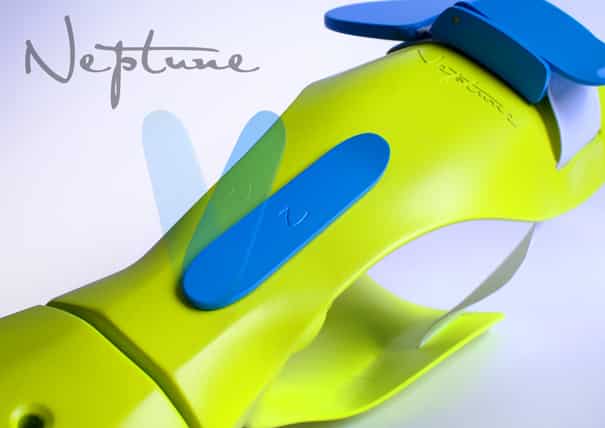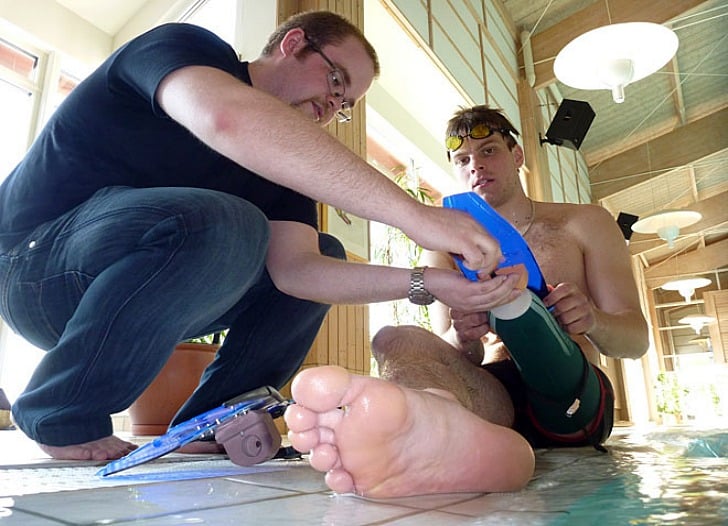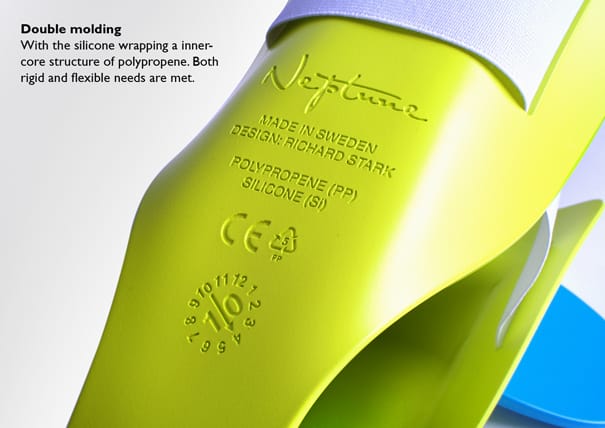Innovative Product Design: Fin Prosthesis Turns Amputees into Acquamen
Advances in battlefield medicine have resulted in far fewer fatalities in the Iraq and Afghanistan wars, but during this period there has been a significant increase in the number of amputees in Great Britain and the United States. Thankfully, new frontiers in engineering and medical technology have made a major impact in the lives of amputees. Now Swedish designer Richard Stark has created a unique prosthetic limb for amputees – the Neptune prosthesis is a flipper that allows them to swim more effectively.
Stark’s design is weighted to balance out the power of the other limb. Bilateral amputees could also find increased functionality in water. Stark – no relation to Iron Man’s Tony Stark – designed the concept in just 10 weeks for a class project. The Neptune works just like other prosthetic devices, by slipping it into a cup and then adjusting it so that it is secure and comfortable. The Neptune uses a standard silicon liner that works with the cup to distribute forces away from the tip of the limb, giving it mobility and flexibility.
A slider adjusts the strength and give of the fin. There is also a folding joint, so the person can choose how he or she wants to swim – freestyle (straight), or breaststroke (which requires a 90-degree angle).
As Stark points out, the vast majority of limb loss results from diabetes, not trauma. The average amputee, then, is pretty unhealthy, so getting active is paramount. Swimming is especially beneficial, because it’s easy on your body. The fin would address the obvious complications of paddling around with one or two missing legs.
The Neptune is a great option for who enjoy swimming and triathlons, but it would likely be banned in races. Stark worked with amputee swimmers to make the device. He said “If they could activate the inactive limb, they would develop muscular strength and mobility to use in competition. So, even though you’re not allowed to use one in the actual competition, you could use it as a tool for training.”
Neptune would also greatly increase the mobility and lifestyle options for non-athletes. And as Stark has pointed out, it would also help non-veterans, like those born with birth defects or who lost limbs due to disease like diabetes.
The Neptune looks beautiful, with its blue and green color (a nod to the colors of the sea, as well as Stark’s native Sweden). The device is non-toxic, with the silicone carefully tested. The green parts of the design are pliable and soft. The blue parts are made from an easily recyclable polypropylene. The combination is comfortable and environmentally-friendly. These materials are also highly resistant to chemicals and acids, meaning that Stark made them to be as durable as possible, reducing the amount of money a person needs to spend to replace them. Although no insurance covers the fins as of yet, there is a plan to sell them for approximately $350.00, which is certainly reasonable. Who wouldn’t want to become aquaman (or aquawoman)?








